Our Newest Members of the NYU Tandon Faculty
Tandon’s latest group of faculty members arrive in Brooklyn with myriad papers, patents, and honors to their credit — and with a wide range of research interests, from computer vision and drone technology to nano-electronics. Whatever the field, the work being done by our new professors is changing the world.
New NYU Tandon Faculty:
- Caitlin Augustin
- Eray Aydil
- Jeffrey Epstein
- Chen Feng
- Michael Horodniceanu
- Li Jin
- Giuseppe Loianno
- Tom Mazzone
- Christopher Musco
- Benedetta Piantella
- Elisa Riedo
- Julia Stoyanovich
Caitlin Augustin
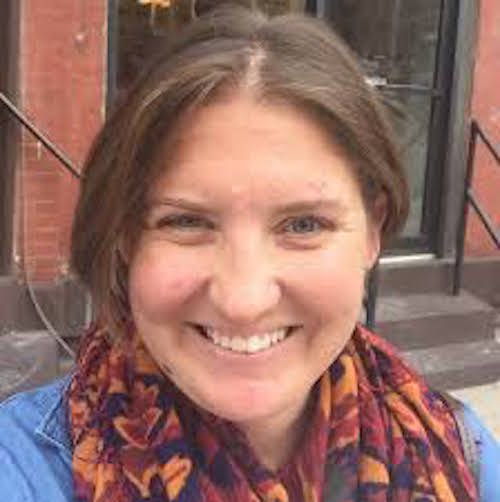
Anyone who knew Caitlin Augustin, an industry assistant professor in Tandon’s Department of Technology Management and Innovation, while she was growing up, would probably not be surprised that she is using her engineering know-how and technical skills to better the world. Her parents, both career members of the U.S. Marine Corps, instilled in her a firm sense of right and wrong and stressed the importance of civic duty. As a young woman, she attained the prestigious and rare Gold Award, the highest achievement in Girl Scouting, given only to those who have completed ambitious projects with a sustainable community impact.
Augustin, who lived all over the country thanks to her parents’ military service, attended high school in Florida, and when it came time for college, she decided upon the University of Miami. “I knew I wanted to both major in engineering and row for a division one crew team, and UM fit both those bills,” she recalls. “I also had a longstanding interest in environmental sciences sparked by a ‘science in the summer’ program I took as a seven-year-old, and Miami allowed me to meld engineering and optimization with my environmental passions and interest in development. I had this idea that engineering could be used to save the world.”
While in school, Augustin spent a number of years volunteering with the nonprofit Engineers without Borders, undertaking a series of projects in Central America involving water distribution systems and the construction of healthcare centers. She was also tapped for UM’s Iron Arrow Honor Society, the highest laurel attainable at the University of Miami, given in recognition of the honoree’s love of alma mater, character, leadership, scholarship, and humility.
As she was completing her studies through the University of Miami's Abess Center for Ecosystem Science and Policy while conducting research at Columbia, she began volunteering at the nonprofit DataKind, a group that brings together top data scientists with leading social change organizations to collaborate on cutting-edge analytics and advanced algorithms to maximize social impact. There she worked on a variety of initiatives, including a philanthropic-transactions project seeking to use data to measure and understand the impact of the #GivingTuesday campaign and the development of an open-access, machine-learning assisted tool to aid researchers in finding relevant citations and extracting desired data from PDF articles.
That volunteer work led to a director’s post at DataKind, which she will continue to hold while teaching at Tandon. “I think the two roles are synergistic,” she says. “In my management-science class, as well as in the new agile project management course I’m launching, I’ll draw on my real-world experiences to enhance my classroom examples and explanations. I'm very focused on making my classes relevant, and I expect my students to be able to use their final projects as part of their portfolio for job applications.”
Given Augustin’s longstanding commitment to improving the world, it also seems reasonable to expect that many of her students will adopt that ethos and be eager to follow her lead.
Eray Aydil
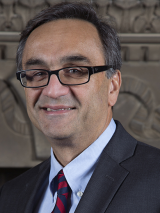
Eray Aydil was first introduced to science and technology by his mother, a self-educated computer programmer who was amongst the first woman in their native Turkey to hold such a position. Accompanying her to her job in the evenings, he found his interest sparked, and he subsequently excelled in STEM subjects at the British-style boys’ high school to which he had won admission. Because the school catered mainly to the sons of expatriates, classes were conducted in English, and Aydil was thus comfortable with the language when he moved with his family to the U.S. at the age of about 13.
After graduating from his new high school in California at 16, Aydil studied at the University of California, Berkeley, and upon completing his graduate studies at the University of Houston, he returned to the West Coast, accepting a faculty post at the University of California, Santa Barbara. His time there overlapped, somewhat fortuitously, with that of David Pine. Pine chaired that school’s Department of Chemical Engineering, and by the time he left to come to NYU in 2005, his UCSB program had been named one of the top 10 in the country — thanks in large part to the efforts of professors like Aydil, who was also Pine’s vice-chairman.
Aydil himself left Santa Barbara that same year to join the Department of Chemical Engineering and Materials Science at the University of Minnesota, where he embarked on designing and developing efficient, low-cost, reliable solar cells. Among other such initiatives, he was one of the lead investigators on an ambitious multidisciplinary project titled “Materials for Renewable Energy and for Carbon Dioxide Emission Reduction” that aimed to improve solar photovoltaic cells, accelerate green processing and advance thermal storage to build a more flexible electric grid, and he paved the way for a novel hybrid doctoral course in chemical and materials engineering at the school by redesigning a graduate course in thermodynamics so that students from either discipline could benefit.
His eponymous group (the Aydil Photovoltaics and Plasma Research Lab) ultimately became one of the most widely respected in the field. “I view research not as a separate activity from teaching, but as a vehicle to mentor students,” he has said. “I choose the research projects I pursue based on whether they will excite and educate my students.” There are unsung benefits to having students doing hands-on research in the lab, he maintains. “You have a higher probability of making an impact through your students than yourself,” he has asserted. “I know how much time research takes, how many challenges there are. But these students don’t know any better. When they walk through that door, they’re ready to change the world.”
When Aydil’s old colleague Pine (by then the chair of Tandon’s Department of Chemical and Biomolecular Engineering) approached him to come to NYU in 2018, he agreed. “NYU Tandon is growing and developing, and I believe I can make a great impact here as it does,” Aydil explains. “I’m leaving behind a well-oiled machine in Minnesota and looking forward to new challenges in Brooklyn.”
Aydil has never been one to sidestep challenges — in the lab or elsewhere. For proof, look no further than the fact that he ran his first marathon at age 48. (“It was a Forrest Gump moment: I just felt like running,” he quips.) In the last five years he has run in more than 15 marathons, as well as in several triathlons, and he sometimes participates in multiple events in a single week.
Jeffrey Epstein
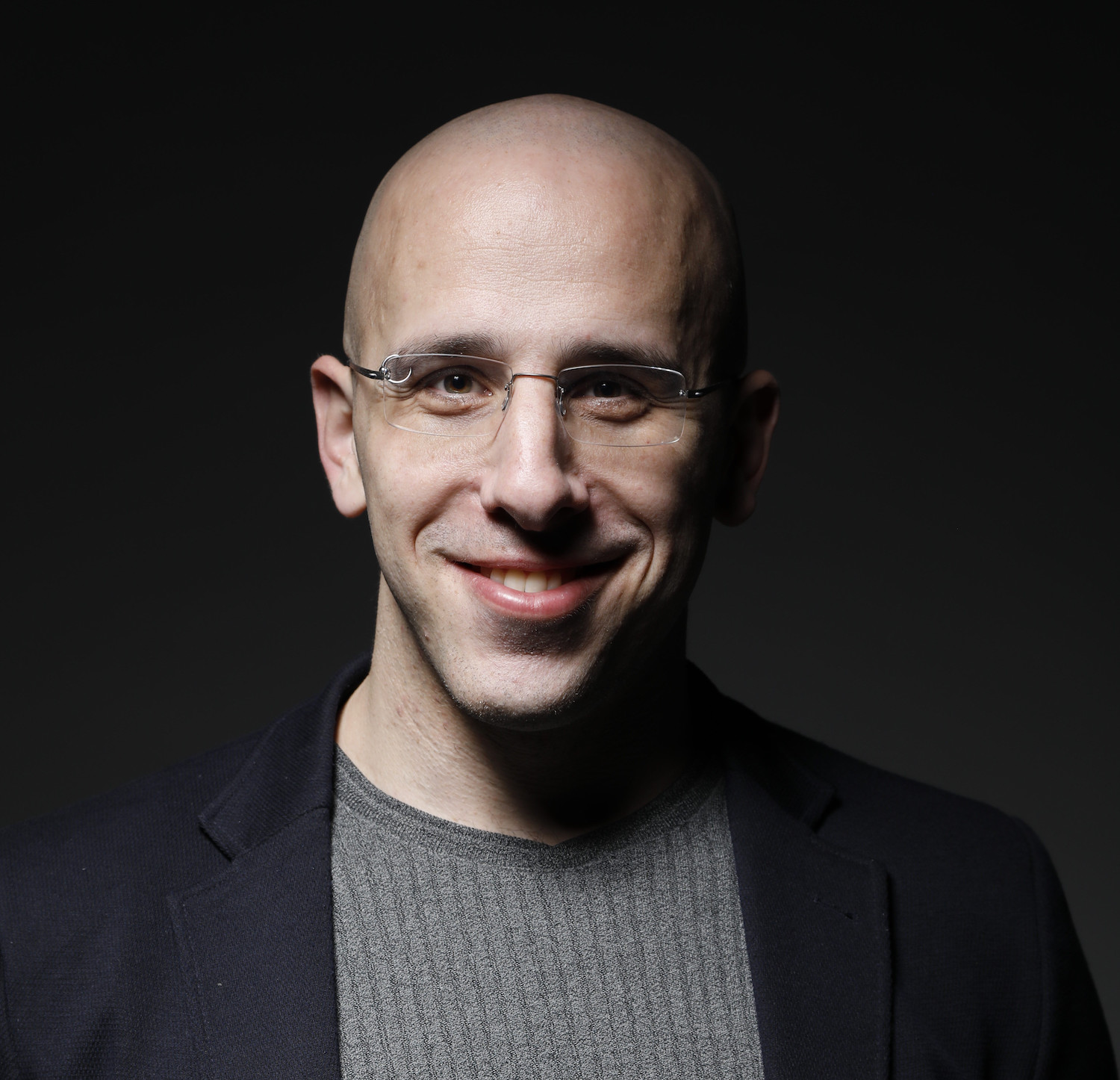
Born in the U.S. and educated, in part, in Great Britain, Jeffrey Epstein has also worked as a programmer, computer science educator, and researcher in such places as the Czech Republic, Hungary, and Mongolia.
A self-taught programmer, he had an internship at IBM after high school, and he spent a summer at the company’s offices in Mainz, Germany, where he worked on storage systems. In 2001, he returned to the U.S. to work as a programmer for a Pennsylvania-based equity trading firm. Afterwards, Epstein took a job as a team leader and software engineer at Siemens in Brno, Czech Republic.
After completing his graduate studies at Cambridge University's Fitzwilliam College, Epstein taught computer science at universities in Budapest and Ulaan Baatar, and also developed software at several international start-up companies.
Now, following a teaching position at Wesleyan University, Epstein — whose research focus is on the development of reliable, high-performance distributed systems — is joining the NYU Tandon Department of Computer Science and Engineering as an industry associate professor.
Chen Feng
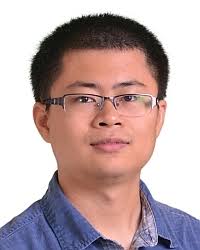
Assistant Professor Chen Feng knew from an early age that he was destined for a career in academia. He had role models in his parents, who taught electrical and mechanical engineering at a community college in their native China, and even as a youngster, the moment he learned something new he was enthusiastic about passing it on. That instinct served him well during his graduate studies, when he served as a co-instructor of construction management information systems and construction cost engineering and helped develop a new course on the use of automation and robotics in the construction industry.
Feng, a self-professed science-fiction geek, is especially excited about the last topic. “I’m fond of the animated film Wall-E, about a robot tasked with cleaning up an abandoned city,” he says. “So when I’m asked to talk about my work to laypeople, I explain that my research goal is to enable real-life robots like Wall-E to work on construction sites, with the aim of making projects safer, more cost-effective, and more labor-efficient.”
To that end, Feng, who is appointed jointly to the Department of Civil and Urban Engineering and Department of Mechanical and Aerospace Engineering, studies computer vision (because working robots need to “see” in order to navigate obstacles and manipulate tools and materials) and machine learning (because they need to be smart in order to help humans), among other disciplines. He looks forward to instilling that same multidisciplinary mindset in his students. “Today’s engineers must work across boundaries,” he asserts. “Many locales, including New York City itself, are contending with aging infrastructure, insufficient resilience, and other pressing problems, and we all need to band together to devise solutions. Our future engineers should better understand the rising influence of artificial intelligence and be able to apply automation and robotics in those occasions.”
Feng’s wife is a biochemist engaged in pharmaceutical research and development, and he has also been active for the past few years in industry: he was affiliated with the Computer Vision Group at the Mitsubishi Electric Research Laboratories (MERL), where he worked on visual simultaneous localization and mapping (vSLAM) using points and planes and invented a fast plane extraction algorithm among several other patented robotic vision algorithms. He is eager, however, for his return to a university setting. “I love to work with students and help them grow. I employ plenty of visual teaching aids and involve my students and research interns in hands-on projects, so I hope everyone will find my classes interesting,” he says. “I anticipate being in the MakerSpace a lot.”
Feng benefitted greatly from student contests during his formative years — among his early laurels were first-place finishes at the Chinese Undergraduate Math Contest of Modeling and ACM Central and North China Collegiate Programming Contest, as well as the National Academician Xia Jianbai Award for Innovative Student in China – and he hopes his students will do the same. “Competitions can be real learning experiences, especially those events that involve problem-solving as a multidisciplinary team,” he says. “That mirrors what they will probably be facing as engineers in the working world, and I want them to be prepared.”
Michael Horodniceanu
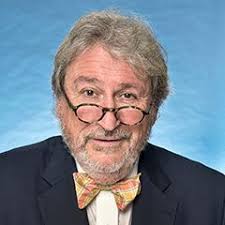
When journalists write about Michael Horodniceanu, it is not uncommon for them to use superlatives. A recent Observer article trumpeted “Mega-Projects Need a Mega-Manager,” while a New York Daily News reporter touted his “Grand Slam” track record. Those are not examples of hyperbole; few terms other than Grand Slam or Mega-Project could accurately describe Horodniceanu’s storied tenure as President of the MTA’s Capital Construction Program and his successful completion of the first phase of the long-awaited Second Avenue Subway, the launch of the East Side Access project that will finally bring Long Island Rail Road trains to Grand Central, the construction of the new South Ferry Station, the gleaming new Fulton Center, and the ambitious extension of the #7 line. That list is all the more remarkable when you consider, as the Observer explained, that the city has “80,000 miles of electrical cable, 6,200 miles of water mains, 6,300 miles of gas mains, 7,400 miles of sewer lines, and 100 miles of steam pipes” that must be considered during any major construction project.
Horodniceanu — who also served from 1986 to 1990 as Commissioner of New York City’s Bureau of Traffic, where he was charged with day-to-day traffic operations and the reconstruction of the roadway infrastructure in the administration of Mayor Ed Koch — seems poised to make similar waves here at the NYU Tandon School of Engineering, where he was recently named an Industry Professor and appointed as the IDC Innovation Hub Chair. In the latter capacity, he will be overseeing a new initiative aimed at actively engaging stakeholders across the construction industry, including developers, designers, contractors, and government officials, in formulating new approaches to the construction challenges facing the industry at large and the city in particular. The institute, he says, will allow NYU Tandon’s students to take an active role in hands-on research and a revitalized curriculum, and allow them increased opportunities to network and make connections within the industry.
His presence as a Tandon faculty member represents something of a homecoming for Horodniceanu, who joined the school in 1975 as a Research Associate and graduated in 1978 with a doctoral degree in Transportation Planning and Engineering from what was then affectionately known as “Poly” — the former Brooklyn Polytechnic Institute now NYU Tandon - and immediately began teaching there as an assistant professor. He has also taught at Manhattan College and was instrumental in developing and enhancing curriculum by introducing new transportation-related classes at both institutions, leading courses in Transportation Engineering, Transportation Finance, Transportation System Safety, Highway Design, Railroad Engineering, and Terminal Design. His CV also includes working in private industry: for numerous years he served as Chairman and CEO of the Urbitran Group, a 250-person, multidisciplinary transportation planning, engineering, architectural, and construction management firm with offices throughout the U.S. that also counted Tandon Professor John Falcocchio as a principal More recently, Horodniceanu began acting as a senior consultant at Urban Advisory Group, Inc., providing his expertise to contractors, consultants, developers, and governmental agencies.
With more than four decades of experience across industry, government, and academia, Horodniceanu has compiled what a headline writer might be tempted to call a “Mega-Resumé,” and there’s little doubt that he will amass a “Grand Slam” record of achievement now that he’s back here at NYU Tandon.
Li Jin
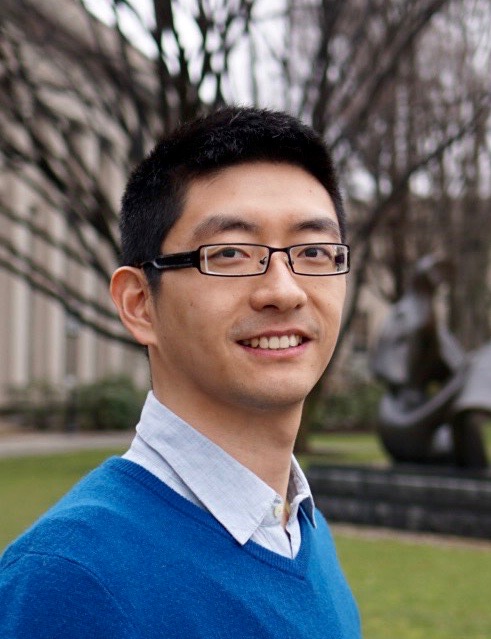
In late March 2018, Li Jin was invited to give a presentation on resiliency at NYU Tandon’s Department of Civil and Urban Engineering, home of C2SMART (Connected Cities for Smart Mobility towards Accessible and Resilient Transportation), a U.S. DOT Tier 1 University Transportation Center. There followed another invitation: to join the department as a faculty member.
Now an assistant professor, Jin is carrying on his research into making smart transportation systems more resilient and better able to withstand adverse conditions and events. “My work is motivated by the many disturbances that can affect transportation systems, such as crashes, demand fluctuation, and traffic signal malfunction,” he explains. “I use stochastic processes to describe the occurrence and clearance of disturbances and perturbed flow dynamics to characterize the congestion induced by disturbances; while my work delves into the theoretical, I always have an eye on practical applications, and I’m particularly interested in designing effective traffic management strategies that maximize the resiliency of the system.”
Among the projects he undertook as a graduate student was the modeling of “platoons” of trucks that assume self-driving capabilities and communicate wirelessly to manage the distance between them, thus allowing for fuel savings and more compact traffic flows. He is particularly concerned with the efficiency of such automated highways under disruptions. He also identified the potential congestion that could arise in existing infrastructure with smart highway technology — work that could help traffic managers pinpoint the tradeoffs inherent in smart highways and deploy optimal solutions.
A native of Nanjing, one of the ancient capitals of China, and an avid aficionado of history, linguistics, and literature, Jin is eager to make use of New York City’s many cultural resources. Drawn here in part for the chance to work with Kaan Ozbay, C2SMART’s director, he is also looking forward to having the city as a living lab of sorts. He hopes to become familiar with New York’s playing fields as well as its roadways, however, since he is, in addition to his other pursuits, an enthusiastic fan of soccer; at MIT he captained the Chinese students’ soccer team and will be seeking opportunities to play now that he is settled here.
Giuseppe Loianno
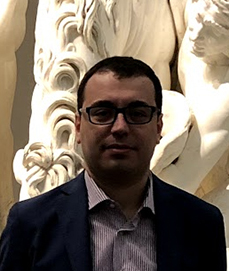
There’s no denying that most people find autonomous flying robots – otherwise known as drones – fascinating. Now imagine one being sent to explore deep inside the damaged Fukushima Nuclear Power Plant in Japan. Giuseppe Loianno, a new assistant professor with a joint appointment to NYU Tandon’s Department of Electrical and Computer Engineering and Department of Mechanical and Aerospace Engineering, is making just such a plan and hopes to involve some of his students in the multiple challenges that this research topic presents.
Loianno, who was affiliated with the University of Pennsylvania’s General Robotics, Automation, Sensing & Perception (GRASP) Lab before coming to Tandon, is engaged in developing increasingly small and more autonomous drones — with one basic challenge being that the smaller the unit, the more difficult it is to build in features that allow for autonomy related to agile navigation, transportation, and interaction with the environment.
“I’m trying to connect artificial intelligence and pure robotics to improve and increase the autonomy of these platforms,” he explains. “We need to be able to concurrently design perception [which is usually done by means of onboard cameras and inertial measurement units like those used in smartphones] and motion planning [through algorithms].”
Loianno, who plans to develop a course devoted fully to flying robots technology, envisions a day when robot swarms communicating wirelessly will enter a burning building to warn firefighters of dangerous areas, aerially inspect aging bridges, aid in search-and-rescue operations — and even reveal the conditions in the bowels of a nuclear reactor like the one at Fukushima. “Drones will go wherever humans are denied access,” he predicts, “and anyone who has studied in the field will be in a very strong position to find employment or entrepreneurial opportunities.”
Tom Mazzone
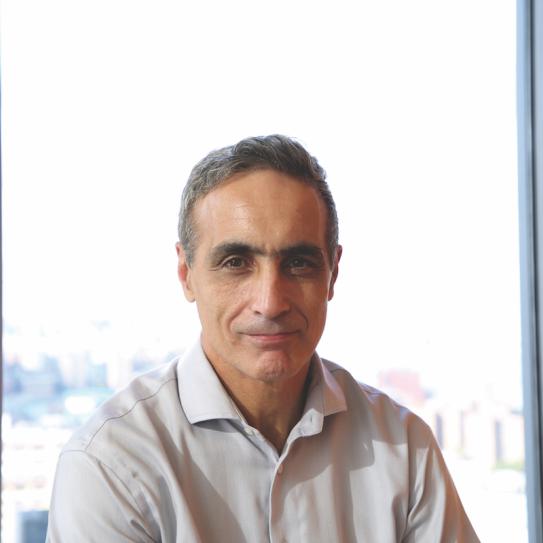
Tom Mazzone, a longtime Tandon instructor who was recently named an Industry Associate Professor and head of the school’s Industrial Engineering (IE) program, keeps a grueling schedule that involves teaching several courses, including Project Management, Operations Management, and Supply Chain Management, as well as maintaining a thriving New England-based consultancy that he is reluctant to give up despite his rapidly expanding academic duties.
“It’s important to remain active in industry and to bring that real-world experience and attitude to the classroom,” he explains. “It allows me to give students deep, first-hand knowledge of what they may face in the work world and how they can apply what they learn on a practical level.”
Mazzone – who holds degrees from Notre Dame, the University of Auckland, and France’s École des Hautes Études Commerciales du Nord (EDHEC) – served as an accountant before moving, as he says, “from auditing to advising.” He looks forward to helping reinvigorate the IE program here at the School of Engineering – an institution he originally joined some two decades ago, at the behest of Mel Horwitch, the director of what was then called Poly’s Institute for Technology and Enterprise.
“There are so many resources at NYU that we can leverage,” he says. “I can envision partnering with the Future Labs network of incubators, for example, or having my students engage in projects at the MakerSpace. The potential for collaborating with those in other disciplines is very exciting.”
IE itself poses exciting prospects for students seeking interesting, in-demand work. The field – which involves designing and evaluating integrated systems for managing production processes from start to finish – requires a knowledge of quality control, logistics, cost analysis, and much more, and as businesses move from old-school manufacturing to new technologies, industrial engineers are helping them evolve. “We’re really bringing an engineering mindset to organizational behavior and making enterprises more agile and responsive,” he explains. “We’re examining issues like how to place the core concept of supply chains into a modern context, what inventory looks like now, and methods of connecting people who make things with those who need them.”
Christopher Musco
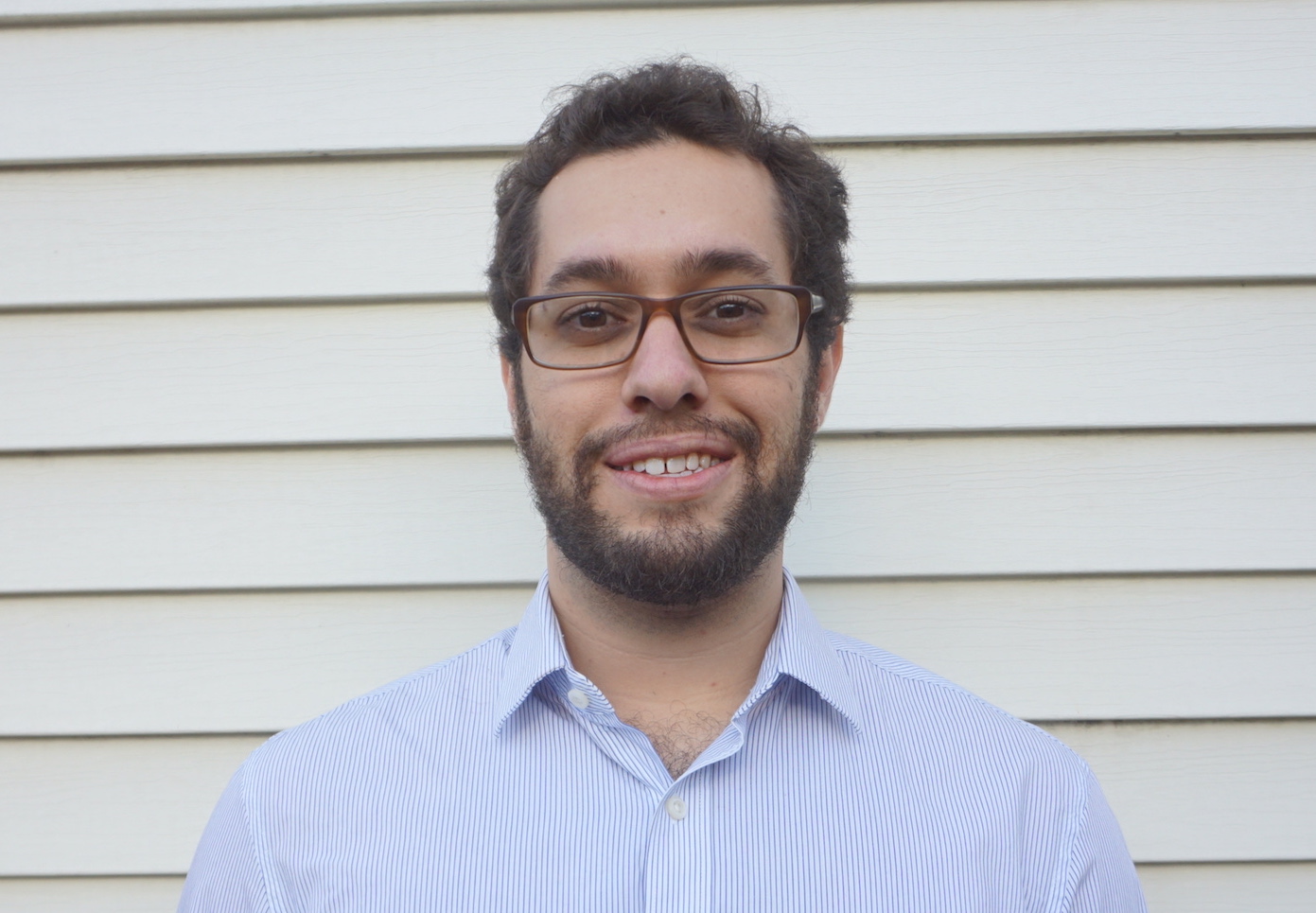
Christopher Musco, a new assistant professor in the Department of Computer Science and Engineering, has a doppelganger — his twin brother, Cameron, who shares much of the same educational background (undergraduate degree from Yale and doctorate from MIT) and software-development experience (stints at a series of startups). They have also authored papers together and are both concurrently embarking on tenure-track careers (Christopher here in Brooklyn and Cameron at the University of Massachusetts Amherst). It’s easy to imagine that set of circumstances as the basis for one of those identity-switching comedies like The Parent Trap.
The Hollywood films that come more readily to mind when hearing about Musco’s research, however, are those like Hidden Figures or Goodwill Hunting, in which brilliant mathematicians solve problems that have confounded others or that have enormous practical application. His work tackles a central challenge of data science, he explains: “With data volume recognized as a primary factor behind advances in machine learning and data-driven discovery, how do we scale statistical methods to take advantage of our largest datasets?” His goal is to build algorithmic tools that will profoundly shift how data scientists solve fundamental problems and bring effective techniques to scale so that they have the widest possible applicability. “To me there is nothing more exciting than learning a theoretical or mathematical concept that transforms how I view a real-world problem,” he says, “and I want to share that joy through my research and teaching.”
Musco, a native of Rhode Island, grew up with a love for hands-on engineering, restoring classic cars with his grandfather, including a Volkswagen Beetle and an Alfa Romeo. As a teen, he also designed and built his own skis, some of which he still uses today. While he initially considered studying mechanical engineering or architecture, after first experiencing the intertwined joys of math and computing as an undergraduate, he never looked back. Given his wide-ranging interests and enthusiasm for pursuits both scholarly and otherwise, it’s tempting to reach for another cinematic reference and characterize him as A Man for All Seasons.
Benedetta Piantella
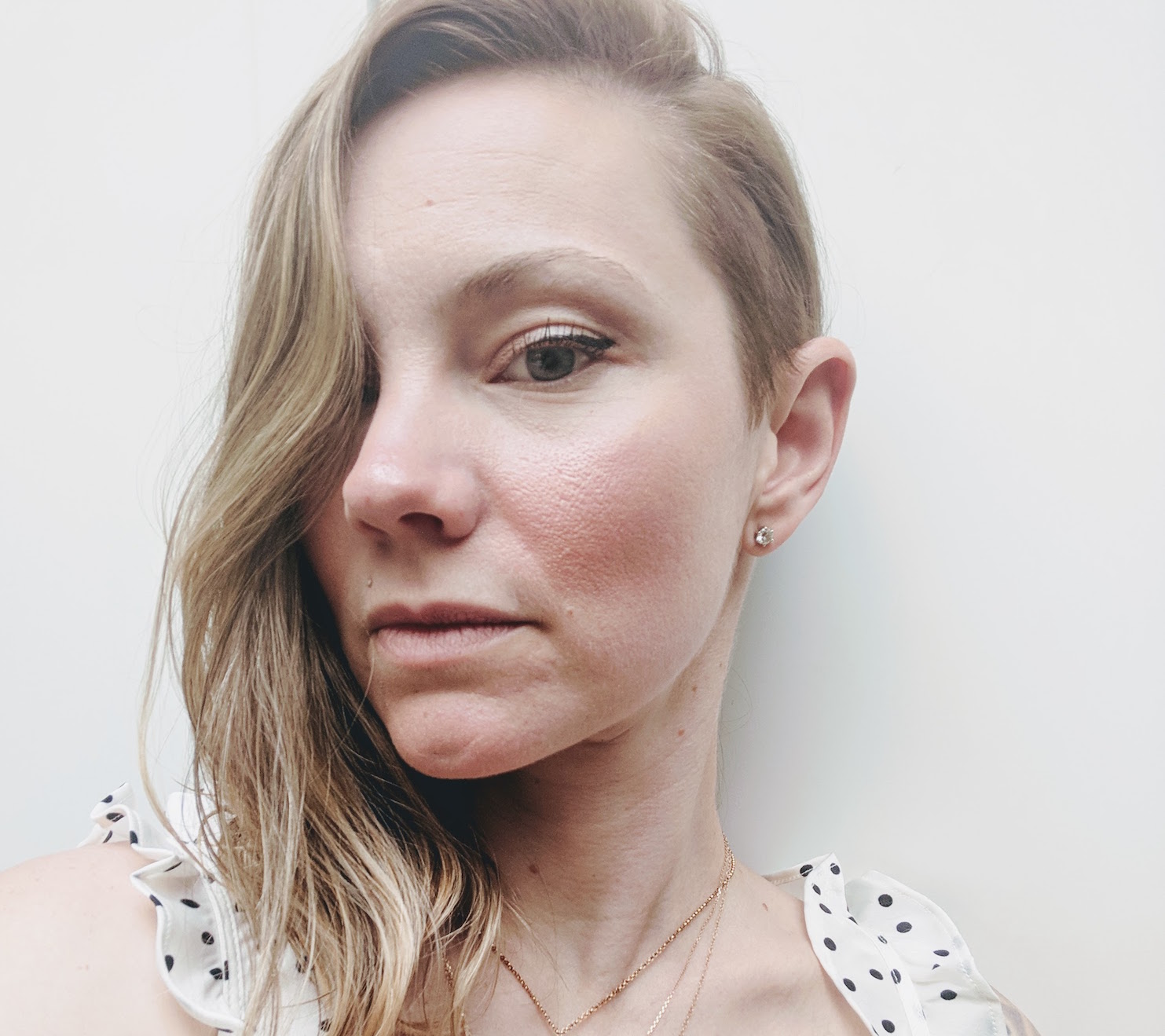
Technologist and designer Benedetta Piantella, a new Industry Assistant Professor in the Department of Technology, Culture, and Society’s Integrated Digital Media Program, can pinpoint the moment at which she decided to switch from using technology to express herself artistically to applying her technological skills and love of process to solving real-world societal problems. A graduate of Tufts University and the School of the Museum of Fine Arts (SMFA) Boston with a BFA in Interaction Design and Interactive Installations, Piantella was taking a long-awaited vacation in Sri Lanka in 2004 when a devastating tsunami hit as she was sleeping on the beach in Unawatuna, a bucolic area known for its coral reefs.
“My goal changed from wanting to create interactive experiences for people to wanting to help them on a more fundamental level,” she says. To that end, she turned her attention to a series of humanitarian projects, partnering with such organizations as the UN, UNICEF, the Earth Institute at Columbia University, and several NGOs in the developing world.
Quench, as one of her projects is known, for example, is aimed at ensuring adequate potable water in areas where that resource is in short supply. She traveled to Kenya to get input from people affected by water shortages when developing the system, which involves easy-to-maintain water dispensing kiosks that can be accessed equitably using a “Quench card,” reminiscent of a debit card. Another project, this one New York City-based, is aimed at helping local businesses become more resilient in the wake of climate-change events like Superstorm Sandy. “It’s important to remember that there are challenges right here, in our own backyard,” she says. “And community members everywhere are vital in developing solutions to the problems they may face.”
Much of Piantella’s work involves community-based participatory research, whereby a remote sensing device will gather information and communicate it, allowing data-based IoT solutions to be devised. “I’m a hardware nerd, and I often work on hardware devices that connect to some type of network to broadcast data,” she explains. “I’m fascinated with the exponential growth of the Internet Of Things (even though I don’t think that term is the most fitting) and its potential use for humanitarian, environmental, conservation, and social purposes.”
The founder of two engineering and R&D companies, Piantella believes an open-source ethos and sharing of knowledge are essential to becoming a world of makers and doers. “I wouldn’t have learned how to do half of the things I know how to do today if it weren’t for the web,” she says, “from making avocado paletas [popsicles], to feeding a rescued bird, to assembling surface-mount components on a $20 hotplate.”
Elisa Riedo
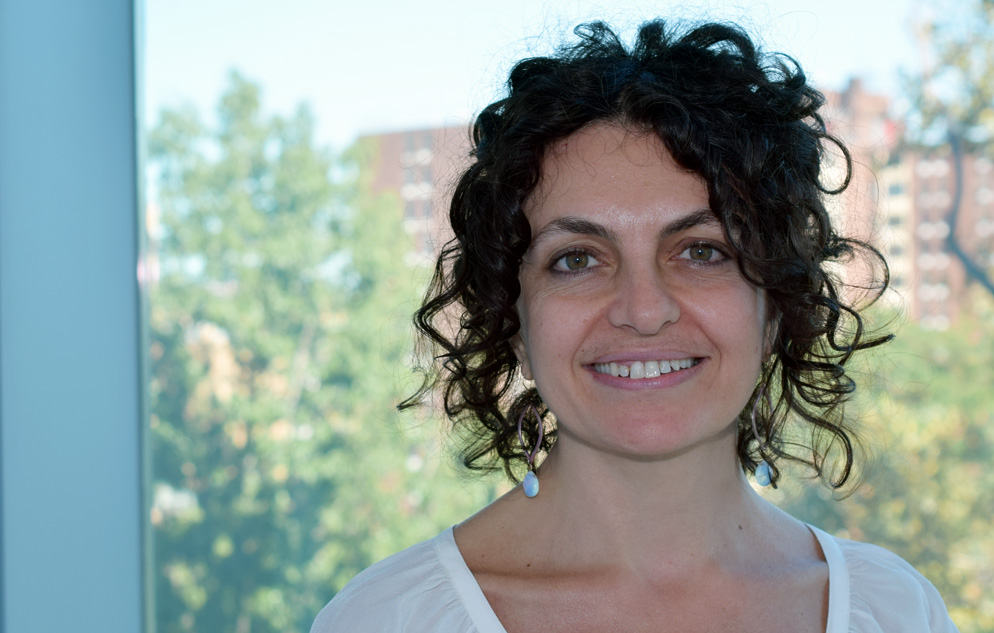
Professor of Chemical and Biomolecular Engineering Elisa Riedo can pinpoint exactly when she set her sights on becoming a scientist. It was as a 10-year-old in her native Italy that Riedo read a biography of Albert Einstein and decided that she had discovered her future career.
That goal took her to the University of Milano, where she graduated summa cum laude in 1995, with a B.S. in Physics. She went on to earn her doctoral degree in that same discipline in 2000, in a joint program between the University of Milano and the European Synchrotron Radiation Facility (ESRF) in Grenoble, France.
Riedo — who completed a post-doctoral fellowship at École Polytechnique Fédérale Lausanne (EPFL), in Switzerland, and was a professor of physics at Georgia Tech and the City University of New York (CUNY) Advanced Science Research Center before joining NYU Tandon — has been celebrated for her work in the field of nano-science, the study of structures and materials on the nanometer scale. (One nanometer is a billionth of a meter; in one oft-cited comparison, a human hair is about 80,000 nanometers thick, while an average ant is about 5 million nanometers long.)
One of her recent discoveries, published in Nature Nanotechnology in January 2018, is generating particular buzz; it has reached even lay audiences via general-interest publications like Newsweek. It occurred when she and her colleagues were working with graphene, a material comprised of a single layer of carbon atoms arranged in a hexagonal honeycomb-like pattern. When the researchers used an atomic force microscope to apply pressure to two layers of graphene at room temperature, the material became as rigid and hard as a diamond – opening exciting new possibilities for the development of lightweight and effective bulletproof clothing and other such innovations. They called the new material, which is the thinnest film with the stiffness and hardness of diamond ever fabricated, diamene. Riedo envisions scaling up the work, originally conducted when she was at CUNY, such that diamene could be used in the automotive or aerospace industries, and the project will be a major focus of her new lab here at NYU Tandon.
A Fellow of the American Physical Society, in the Division of Condensed Matter Physics, Riedo had first made a name for herself with her pioneering studies of 1D and 2D materials; her invention of thermochemical nanolithography (TCNL), which uses a localized heat source to activate a chemical reaction and fabricate micro- and nano-structures of a variety of materials and uses; and her development of novel methods of employing atomic force microscopy.
It’s easy to imagine another 10-year-old, somewhere in the world, reading about Riedo’s work one day and becoming inspired to pursue a scientific career like hers.
Julia Stoyanovich
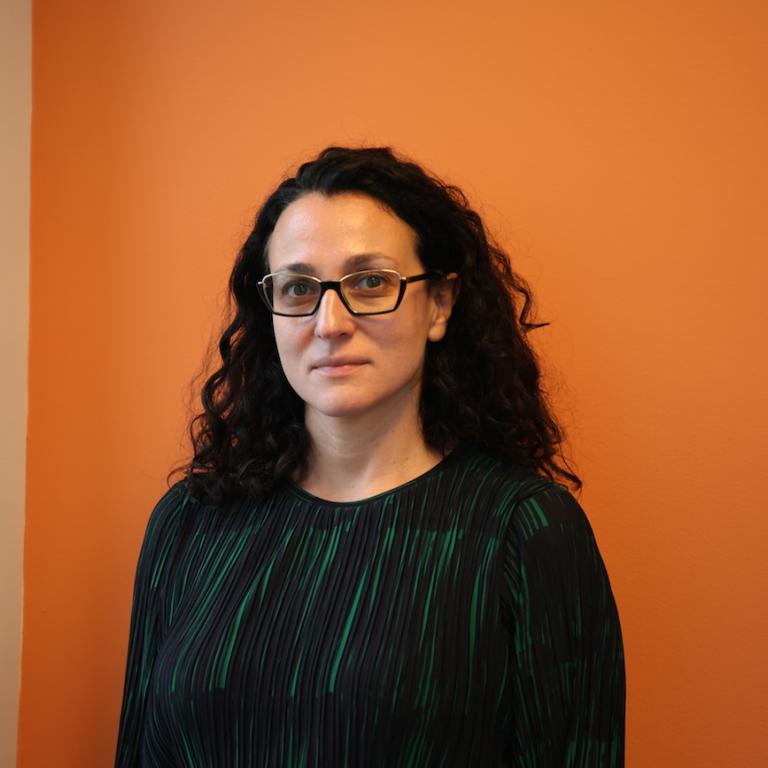
Assistant Professor of Computer Science and Engineering Julia Stoyanovich grew up in Russia, hearing about the experiences of her grandfather, a programmer in the Soviet space program tasked with calculating trajectories for Sputnik, whose 1957 launch marked the start of the Space Age. While it was a very different time — one in which computer memory was measured in cubic meters — it sparked her interest in STEM. After moving to Serbia, in the former Yugoslavia, she attended the highly regarded Belgrade Mathematical High School. When war broke out in Yugoslavia, Stoyanovich relocated to the U.S., where she double-majored in math and computer science at the University of Massachusetts, Amherst, and later earned her graduate degrees at Columbia.
Prior to arriving at NYU Tandon, Stoyanovich taught at Drexel University, and her CV also includes time in industry as a software developer, data architect and database administrator — an experience that she credits with motivating her to work with real datasets and conduct research with practical applications to actual users. Earlier this year she garnered an NSF CAREER Award for her work on evolving graphs. “Many interesting and important questions about graphs concern their evolution rather than their static state,” she explains. “Which Web pages are showing an increasing popularity trend? How does influence propagate in social networks? How do the utilization of transportation options and the cost of ridership in a city change during the day and throughout the week? How does knowledge evolve?”
Among her other areas of expertise is the ethical and responsible use of data. (She has been a member of the Association for Computing Machinery Code of Ethics 2018 Task Force, the Community Principles on Ethical Data Sharing initiative, and the steering committee of the Conference on Fairness, Accountability and Transparency.) New York City Mayor Bill DeBlasio recently appointed her to the city’s first-ever Automated Decision Systems Task Force, which is charged with ensuring fairness and equity in the algorithms used to determine such issues as where to locate firehouses, how to allocate public housing units, and which students will be sent to which schools.
Stoyanovich, who has a joint appointment with NYU’s Center for Data Science, is particularly excited at the prospect of developing a course on ethical data analysis. “Algorithms can and do discriminate against individuals and demographic groups because the algorithms that we use for decision-making today, in the public sphere as well as commercially, are often trained on data,” she explains. “This means that how an algorithm behaves depends on what kind of data it uses to shape itself. The data sets we have available to train algorithms are biased because our society is biased, so then algorithms will also start making these racist and sexist kinds of decisions. The history of our society is embedded in the data.” She concludes, “As computer scientists and engineers, we have a responsibility to understand the societal impacts of the technology we build. It's up to us to help align technological progress with legal and ethical norms, making our data-driven society more inclusive, equitable and just."




